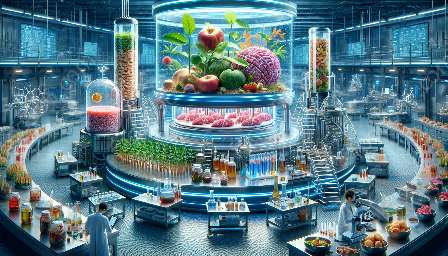In recent years, the demand for sustainable and eco-friendly packaging materials has led to significant innovations in the development of biodegradable food packaging solutions. These advancements align with the growing interest in promoting environmental conservation and reducing the impact of packaging on the ecosystem.
Understanding Biodegradable Packaging Materials for Food
Biodegradable packaging materials are designed to decompose naturally when exposed to environmental factors, such as sunlight, moisture, and microorganisms. These materials offer an alternative to traditional plastic packaging, which contributes to pollution and environmental degradation due to its non-biodegradable nature.
Biodegradable food packaging materials are particularly crucial in the context of the food industry, where the demand for sustainable packaging options continues to rise. Consumers and regulatory bodies are increasingly emphasizing the need for packaging solutions that minimize the environmental footprint of the food supply chain.
Impacts of Food Biotechnology on Biodegradable Packaging
Food biotechnology plays a significant role in the development of biodegradable packaging materials. Through the application of biotechnological processes, researchers and industry experts have been able to enhance the properties of biodegradable materials, making them more suitable for food packaging purposes.
New formulations and composite materials are being explored, leveraging biotechnological advancements to improve the strength, flexibility, and barrier properties of biodegradable packaging. These innovations align with the goal of creating packaging materials that can effectively preserve and protect various types of food products while remaining environmentally friendly.
Recent Innovations in Biodegradable Food Packaging Materials
1. Biopolymer-Based Packaging: Biopolymers derived from natural sources, such as starch, cellulose, and proteins, are being increasingly used to develop biodegradable food packaging materials. These biopolymers offer a renewable and sustainable alternative to petroleum-based plastics, contributing to reduced carbon emissions and environmental impact.
2. Nanotechnology in Packaging: Nanotechnology has been integrated into the development of biodegradable food packaging materials to enhance their mechanical and barrier properties. Nanocomposites, such as nanocellulose-reinforced films, offer improved strength and oxygen barrier properties, extending the shelf life of packaged food products.
3. Edible Packaging: Edible films and coatings made from natural ingredients, such as seaweed extracts and proteins, are gaining traction as biodegradable packaging solutions. These edible materials not only reduce packaging waste but also offer the potential to enhance food preservation and safety.
4. Active and Intelligent Packaging: Incorporating active and intelligent elements into biodegradable packaging materials allows for functionalities such as antimicrobial properties, oxygen scavenging, and real-time monitoring of food freshness. These advanced features contribute to the extension of food shelf life and the reduction of food waste.
Benefits of Biodegradable Food Packaging Materials
The adoption of biodegradable packaging materials for food offers various benefits to both the environment and the food industry:
- Environmental Sustainability: Biodegradable materials contribute to a circular economy by minimizing waste and pollution, ultimately reducing the environmental impact of packaging.
- Reduced Pollution: Unlike traditional plastics, biodegradable materials break down into natural compounds without leaving behind harmful residues or microplastics in the environment.
- Improved Food Safety: Certain biodegradable packaging materials provide enhanced food preservation and safety, helping to maintain the quality of packaged food products.
- Consumer Appeal: Eco-conscious consumers are increasingly drawn to products with sustainable packaging, creating a competitive advantage for brands that adopt biodegradable solutions.
Challenges and Future Prospects
While the progress in biodegradable food packaging materials is promising, there are challenges that need to be addressed for wider adoption and further innovation:
- Cost and Scalability: Some biodegradable materials may still face challenges in cost competitiveness and large-scale production compared to conventional plastics.
- End-of-Life Management: Proper infrastructure and guidelines for the disposal and composting of biodegradable packaging materials are essential to ensure their eco-friendly characteristics are fully realized.
- Material Performance: Continued research is needed to enhance the mechanical, barrier, and thermal properties of biodegradable materials to meet the diverse needs of food packaging applications.
Looking ahead, advancements in food biotechnology, material science, and sustainable packaging technologies are expected to drive further innovation in the field of biodegradable food packaging materials. Continued collaboration among researchers, industry stakeholders, and policymakers will be essential to overcome challenges and achieve widespread adoption of sustainable packaging solutions.

